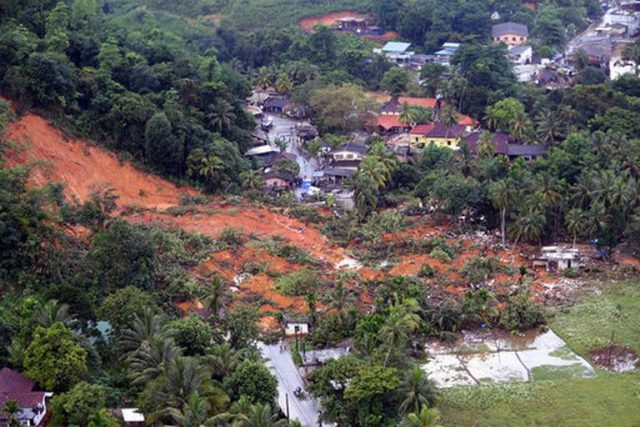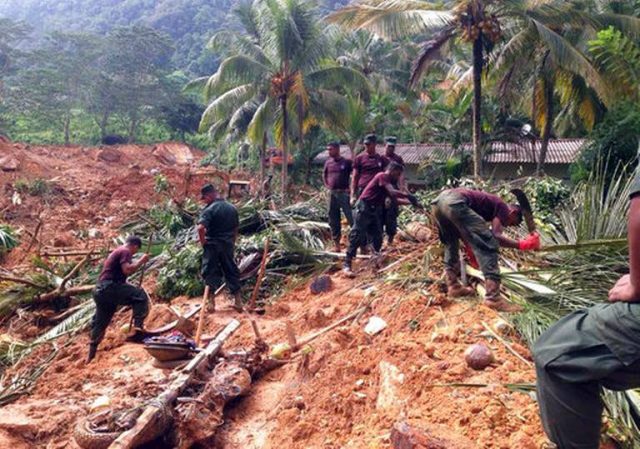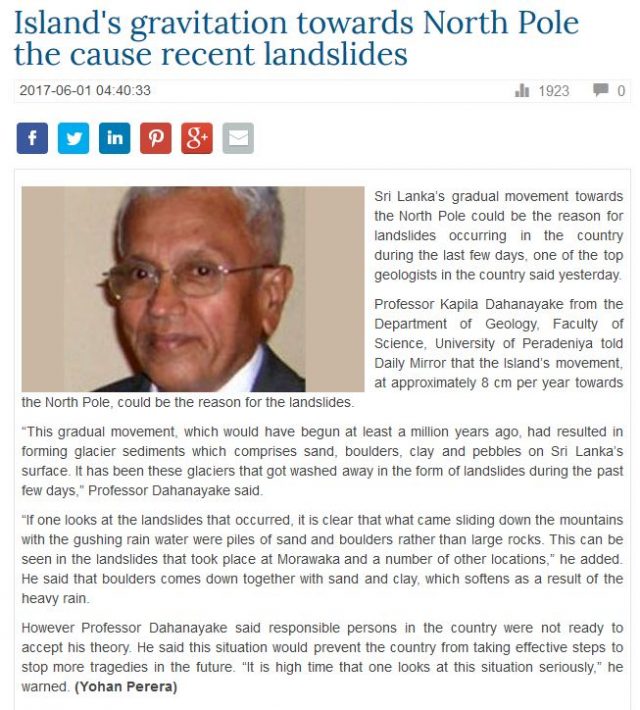1 June 2017
Landslide weirdness: Sri Lanka
Posted by Dave Petley
Landslide weirdness: Sri Lanka
Over the last week Sri Lanka has suffered a major landslide and flood crisis, caused by heavy rainfall. This is not the first such event – indeed there have been many in the past. Local news reports suggest that 203 people have been killed, with a further 96 reported to be missing. Over 630,000 people have been affected across 15 districts of Sri Lanka. About 74,000 people have been displaced. The image below, from AP, shows one of the landslides:

AP image of one of the landslides in a residential area of Kiriella, in Ratnapura district of Sri Lanka.
.
Whilst this image shows another of the landslides, at Kiribathgala, in Ratnapura district, which killed 18 people:-

AP image of the aftermath of a landslide in Kiribathgala, in Ratnapura district, Sri Lanka
.
More rainfall is forecast. As is normally the case, the media are now looking for explanations for the disaster. As a result the Daily Mirror in Sri Lanka, not to be confused with the UK tabloid equivalent, has an extraordinary piece of landslide weirdness today. It is so amazing that I thought it best to provide a screenshot of the article:

Landslide weirdness: an article from the Sri Lanka Daily Mirror
.
Now Professor Kapila Dahanayake appears to be a highly credible scientist with an impressive CV. I am not sure if he is being misquoted in the article, but I feel I need to rebut the explanation that it provides. These landslides have nothing to do with the movement of Sri Lanka towards the North Pole, and there are no recent (i.e. Quaternary or Holocene) glacial deposits in Sri Lanka. The country is only about 700 km from the equator; geologically-recent glaciation makes no sense here.
The materials involved in these landslides can be seen in the images above. These are classic residual soils – i.e. they deeply weathered soils generated through degradation of the bedrock through chemical weathering under the tropical climate. The climate of Sri Lanka is ideal for deep chemical weathering, being both hot and wet. These soils are seen throughout the tropics; they are very often red in colour due to the presence of iron. The presence and properties of these residual soils in Sri Lanka is well-documented and is not contentious. There is nothing in the images above, or any others, to suggest that these materials are anything other than standard well-drained residual soils.
Sri Lanka has a serious landslide problem. The presence of these deep, weak soils in a climate that brings heavy rainfall events is naturally problematic. Put on top of that the loss of natural vegetation, the effects of human disturbance (slope cutting, road building and mining for example) and the impacts of potential increases in rainfall intensity due to climate change, and the likelihood for devastating landslides is clear. This understanding also points the way to appropriate levels of mitigation of course; to blame these events on a shift towards the North Pole is not helpful, in my view.


 Dave Petley is the Vice-Chancellor of the University of Hull in the United Kingdom. His blog provides commentary and analysis of landslide events occurring worldwide, including the landslides themselves, latest research, and conferences and meetings.
Dave Petley is the Vice-Chancellor of the University of Hull in the United Kingdom. His blog provides commentary and analysis of landslide events occurring worldwide, including the landslides themselves, latest research, and conferences and meetings.
That’s a fantastic article. I’d guess it was someone misquoting the professor. I’ve had someone not ask me clarifying questions and ended up with a pretty wonky explanation of how the ground under UBC formed. I’d guess that the reporter interviewed him for a half hour or so and wanted to include some of a wide ranging discussion that included tectonics and paleomagnetism. Just didn’t quite have the framework sorted.